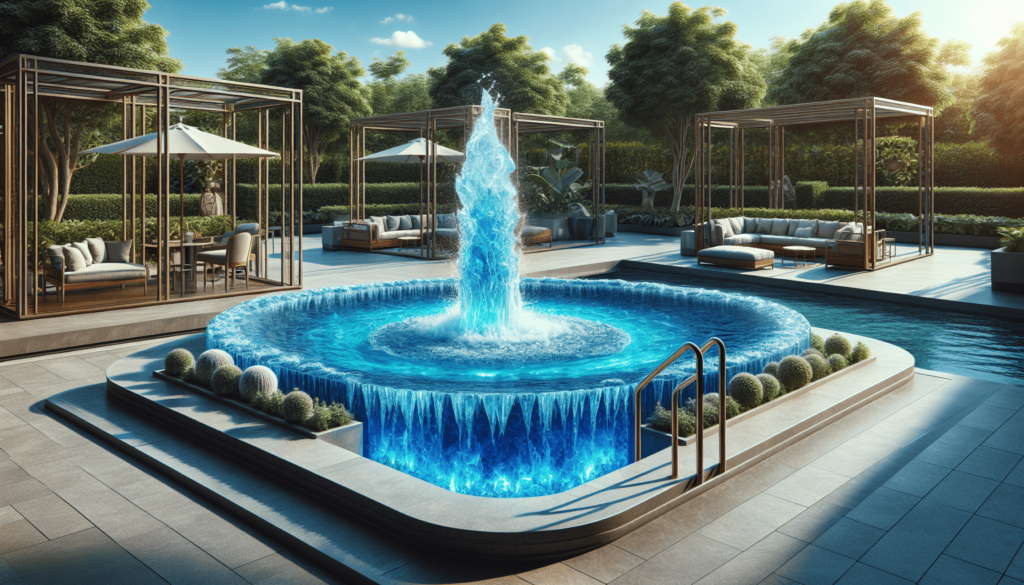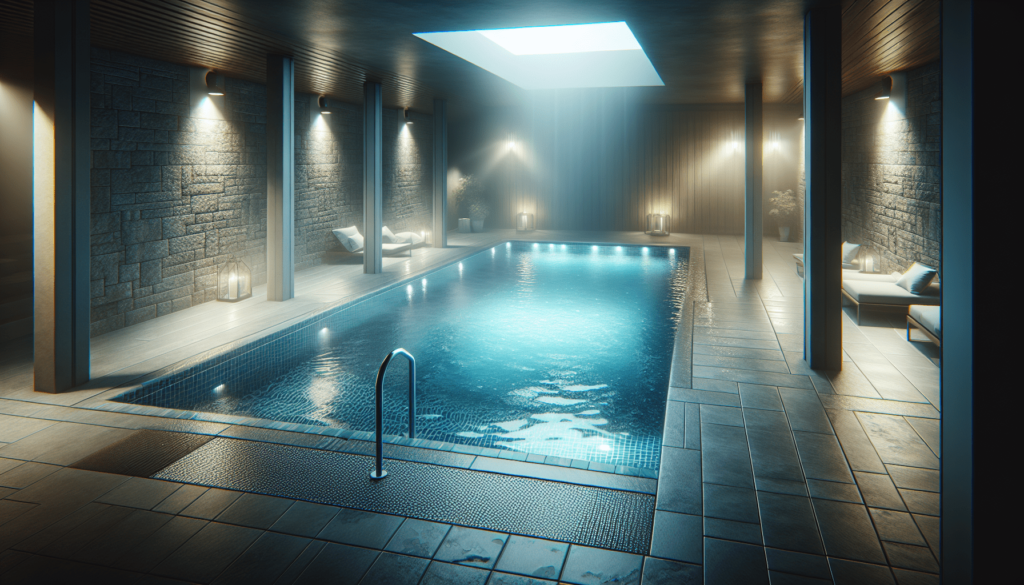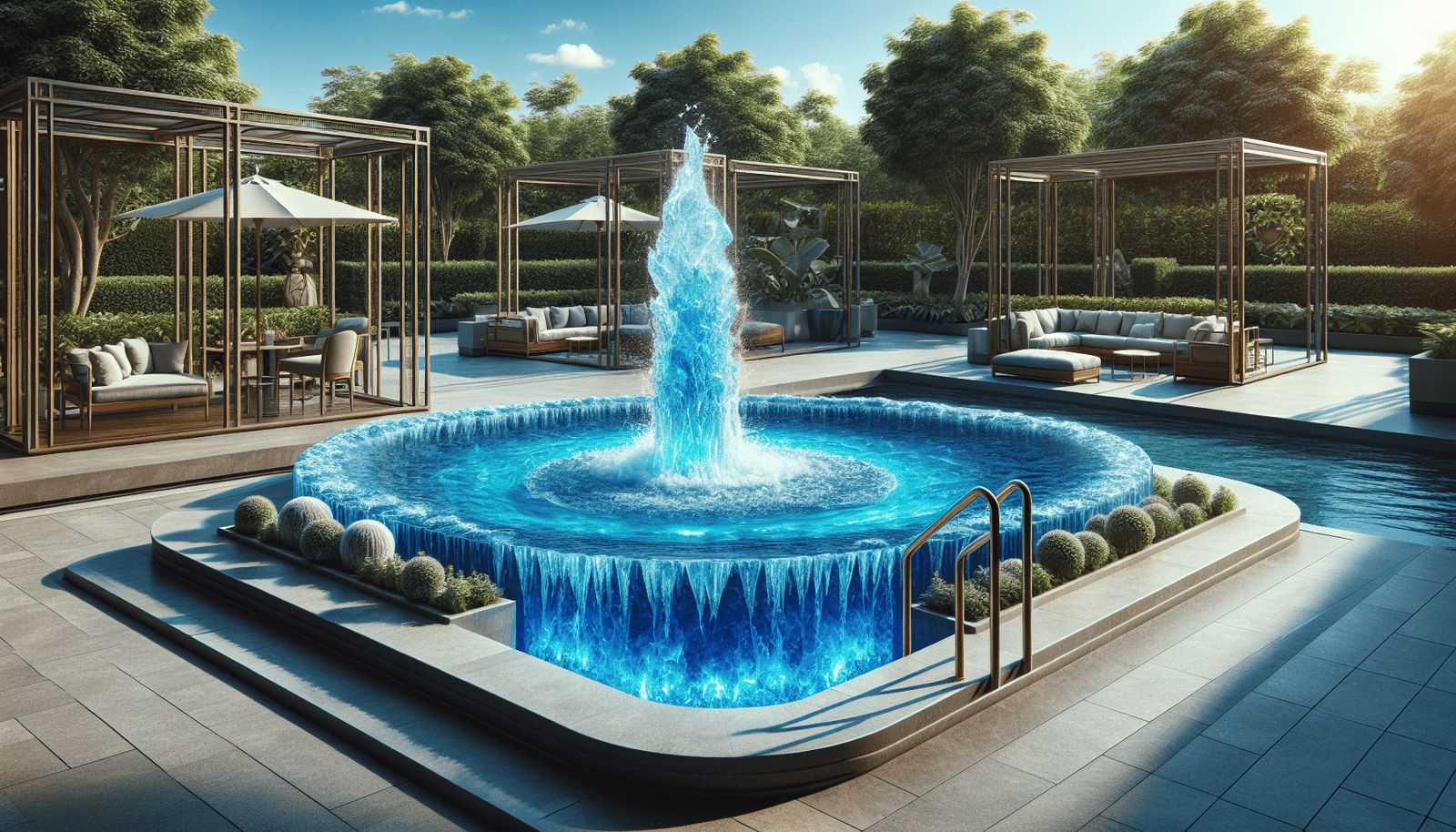Imagine being able to dive into a refreshing pool of icy water on a hot summer day, instantly revitalizing your body and mind. But before you take the plunge, you’re probably wondering: how much does a cold plunge pool actually cost? Whether you’re a fitness enthusiast looking to enhance your recovery routine or a homeowner wanting to add a luxurious touch to your backyard, this article will shed light on the price range of cold plunge pools, helping you make an informed decision for your cooling oasis. Prepare to be amazed as we explore the exciting world of cold plunge pool costs!

Factors Affecting the Cost
When considering the cost of a cold plunge pool, there are several factors that come into play. These factors can significantly impact the overall price of the pool and should be taken into account when planning your budget.
Size and Dimensions
One of the first factors to consider is the size and dimensions of the cold plunge pool. Larger pools will naturally require more materials and labor, resulting in a higher cost. It’s essential to determine the size that suits your needs and fits within your available space.
Materials Used
The materials used in constructing the cold plunge pool also contribute to its cost. Different materials have varying price ranges, durability, and maintenance requirements. Common materials used for cold plunge pools include fiberglass, concrete, stainless steel, and even wooden plunge pools.
Installation Requirements
The installation process of a cold plunge pool involves several requirements that can affect the overall cost. Excavation and site preparation might be necessary, especially for custom-sized pools. Plumbing and electrical work are also crucial to ensure proper functionality. Additionally, if you plan to have surrounding decks or landscaping, the cost will increase accordingly.
Additional Features
Cold plunge pools can be equipped with various additional features to enhance your experience. These features can range from heating systems and chillers for temperature control to water filtration and purification systems for clean and clear water. Lighting, jet systems, and even sound systems can also contribute to the overall cost.
Location
The location of your cold plunge pool can also impact the pricing. Indoor cold plunge pools may require additional construction work and ventilation systems to ensure proper air circulation. Outdoor pools, on the other hand, might require extra measures to withstand different weather conditions.
Standard Cold Plunge Pool Costs
When it comes to the cost of cold plunge pools, they generally fall into three main categories based on the budget range.
Budget Range
For those looking for an affordable option, cold plunge pools can range from a few hundred dollars to a couple of thousand dollars. These budget-friendly options often come in compact sizes and may not include extra features or customization.
Mid-Range
Mid-range cold plunge pools typically range from a few thousand to tens of thousands of dollars. These pools are often larger in size, offer a greater variety of materials, and can include some additional features.
High-End
High-end cold plunge pools are considered luxury investments and can cost upwards of tens of thousands of dollars. These pools are usually custom-sized, constructed with high-quality materials, and equipped with various advanced features.
Size and Dimensions
For most buyers, the size and dimensions of the cold plunge pool will be essential considerations.
Average Size
The average size for a cold plunge pool usually falls between 7 and 12 feet in length and has a width ranging from 4 to 8 feet. These sizes can comfortably accommodate multiple users while still fitting into many backyard spaces.
Custom Sizes
If the standard sizes don’t meet your requirements, custom-sized cold plunge pools are also available. These pools can be designed to fit any space, allowing you to have a personalized swimming experience. However, keep in mind that custom sizes will likely come with higher costs due to the additional labor and materials involved.
Materials Used
The materials used in cold plunge pools play a significant role in their durability, maintenance requirements, and overall aesthetic appeal.
Fiberglass
Fiberglass is a popular choice for cold plunge pools due to its durability and relatively low maintenance needs. Fiberglass pools are also resistant to algae and have a smooth surface that is gentle on the skin. However, they can be more expensive than other materials.
Concrete
Concrete plunge pools offer a great deal of versatility in terms of customization. They can be shaped and designed to perfectly fit your environment. However, concrete pools require proper maintenance to prevent cracks and leaks, and their surface can be rough on the skin.
Stainless Steel
Stainless steel plunge pools are known for their sleek and modern appearance. They are highly resistant to corrosion and have excellent durability. Additionally, stainless steel pools are easy to clean and maintain. However, they tend to be more expensive than other materials.
Wooden Plunge Pools
Wooden plunge pools provide a natural and rustic aesthetic. They are typically constructed using weather-resistant wood, such as cedar or redwood, to ensure longevity. However, wooden pools require regular maintenance and may be prone to water damage if not properly cared for.

Installation Requirements
Installing a cold plunge pool involves several requirements that should be considered when budgeting for the overall cost.
Excavation and Site Preparation
Custom-sized pools may require excavation and site preparation, which can add to the installation cost. Excavation involves digging and shaping the ground to create the desired pool shape, while site preparation ensures a stable and level surface for the pool to sit on.
Plumbing and Electrical Work
Plumbing and electrical work are crucial aspects of cold plunge pool installation. Proper plumbing is essential for water circulation and drainage, while electrical work is required for the functioning of additional features such as heating systems or lighting.
Surrounding Decks or Landscaping
If you plan to have surrounding decks or landscaping around your cold plunge pool, additional costs will be incurred. Decks can provide a space for relaxation and easy access to the pool, while landscaping can enhance the overall aesthetics of your outdoor area.
Additional Features
Cold plunge pools can be customized with various additional features to enhance your enjoyment and relaxation.
Heating Systems
Cold plunge pools can be equipped with heating systems, allowing you to adjust the water temperature according to your preference. Heating systems can range from simple electric heaters to more advanced options like solar panels or geothermal systems.
Chillers and Cooling Systems
For those hot summer days, chillers and cooling systems can be installed to lower the water temperature. These systems use innovative technology to keep the water fresh and invigorating, providing a refreshing experience even in scorching weather.
Water Filtration and Purification
To ensure clean and clear water, water filtration and purification systems are essential. These systems remove impurities, chemicals, and bacteria, ensuring a safe and enjoyable swimming experience.
Lighting
Lighting can create a captivating ambiance when using your cold plunge pool during the evening or nighttime. LED lights, fiber optics, and underwater lighting options are available to provide an aesthetically pleasing atmosphere.
Jet Systems
Jet systems can be installed to provide additional hydrotherapy benefits. These systems create a soothing massage experience, relieving muscle tension and enhancing relaxation.
Sound Systems
For those looking to create a serene and enjoyable environment, sound systems can be integrated into your cold plunge pool. Whether it’s gentle music or the sound of flowing water, a well-designed sound system can enhance your overall experience.
Location
The location of your cold plunge pool will influence both the installation process and the overall cost.
Indoor Cold Plunge Pools
Indoor cold plunge pools provide privacy and year-round usability. However, installing an indoor pool requires proper ventilation systems to ensure adequate air circulation and moisture control. Additional construction work may also be necessary to accommodate the pool’s weight and drainage.
Outdoor Cold Plunge Pools
Outdoor cold plunge pools offer the advantage of enjoying nature and the open air while swimming. However, they may require extra measures to withstand different weather conditions, including proper drainage systems and weatherproofing.
Maintenance Costs
Owning a cold plunge pool requires regular maintenance to ensure its longevity and optimal functionality.
Chemical Balancing and Cleaning
Regular chemical balancing and cleaning are necessary to keep the water in your cold plunge pool safe and clear. This includes monitoring pH levels, chlorine or alternative disinfectant levels, and regularly vacuuming or brushing the pool’s surface.
Equipment Maintenance
Proper maintenance of the pool’s equipment, such as pumps, filters, and heaters, is essential to prevent breakdowns and extend their lifespan. Regular inspections, cleaning, and lubrication of moving parts are necessary tasks that come with owning a cold plunge pool.
Water Replacement
The water in your cold plunge pool may need to be replaced periodically to maintain cleanliness and chemical balance. The frequency of water replacement can vary depending on usage, weather conditions, and water treatment systems.
Long-Term Costs
In addition to upfront and maintenance costs, it’s important to consider the long-term expenses associated with owning a cold plunge pool.
Energy Consumption
Heating, cooling, and operating additional features can contribute to increased energy consumption. It’s essential to factor in these ongoing energy costs when evaluating the long-term expenses of a cold plunge pool.
Repairs and Replacements
Over time, certain components of your cold plunge pool may require repairs or replacements. Pumps, filters, plumbing, and electrical systems are all subject to wear and tear. It’s important to budget for such potential expenses to ensure the longevity and optimal functioning of your pool.
Resale Value
While a cold plunge pool can be a significant investment, it can also add value to your property. Potential buyers seeking wellness amenities may see the presence of a cold plunge pool as a desirable feature, potentially increasing the overall resale value of your home.
Conclusion
Investing in your wellbeing is an essential aspect of leading a healthy and fulfilling life. A cold plunge pool can provide a unique and invigorating experience while offering numerous health benefits. When considering the cost of a cold plunge pool, remember to take into account factors such as size and dimensions, materials used, installation requirements, additional features, location, maintenance costs, and long-term expenses. By carefully considering these factors, you can make an informed decision and invest in a cold plunge pool that suits your needs and budget, ultimately enhancing your overall wellbeing.

